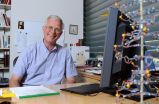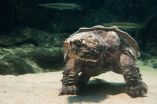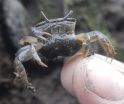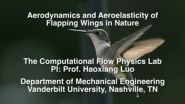(Press-News.org) A team of scientists from Arizona State University's Biodesign Institute and IBM's T.J. Watson Research Center have developed a prototype DNA reader that could make whole genome profiling an everyday practice in medicine.
"Our goal is to put cheap, simple and powerful DNA and protein diagnostic devices into every single doctor's office," said Stuart Lindsay, an ASU physics professor and director of Biodesign's Center for Single Molecule Biophysics. Such technology could help usher in the age of personalized medicine, where information from an individual's complete DNA and protein profiles could be used to design treatments specific to their individual makeup.
Such game-changing technology is needed to make genome sequencing a reality. The current hurdle is to do so for less than $1,000, an amount for which insurance companies are more likely to provide reimbursement.
In their latest research breakthrough, the team fashioned a tiny, DNA reading device a thousands of times smaller than width of a single human hair.
The device is sensitive enough to distinguish the individual chemical bases of DNA (known by their abbreviated letters of A, C, T or G) when they are pumped past the reading head.
Proof-of-concept was demonstrated, by using solutions of the individual DNA bases, which gave clear signals sensitive enough to detect tiny amounts of DNA (nanomolar concentrations), even better than today's state-of-the-art, so called next-generation DNA sequencing technology.
Making the solid-state device is just like making a sandwich, just with ultra high-tech semiconductor tools used to slice and stack the atomic-sized layers of meats and cheeses like the butcher shop's block. The secret is to make slice and stack the layers just so, to turn the chemical information of the DNA into a change in the electrical signal.
First, they made a "sandwich" composed of two metal electrodes separated by a two-nanometer thick insulating layer (a single nanometer is 10,000 times smaller than a human hair), made by using a semiconductor technology called atomic layer deposition.
Then a hole is cut through the sandwich: DNA bases inside the hole are read as they pass the gap between the metal layers.
"The technology we've developed might just be the first big step in building a single-molecule sequencing device based on ordinary computer chip technology," said Lindsay.
"Previous attempts to make tunnel junctions for reading DNA had one electrode facing another across a small gap between the electrodes, and the gaps had to be adjusted by hand. This made it impossible to use computer chip manufacturing methods to make devices," said Lindsay.
"Our approach of defining the gap using a thin layer of dielectric (insulating) material between the electrodes and exposing this gap by drilling a hole through the layers is much easier," he said. "What is more, the recognition tunneling technology we have developed allows us to make a relatively large gap (of two nanometers) compared to the much smaller gaps required previously for tunnel current read-out (which were less than a single nanometer wide). The ability to use larger gaps for tunneling makes the manufacture of the device much easier and gives DNA molecules room to pass the electrodes."
Specifically, when a current is passed through the nanopore, as the DNA passes through, it causes a spike in the current unique to each chemical base (A, C, T or G) within the DNA molecule. A few more modifications are made to polish and finish the device manufacturing.
The team encountered considerable device-to-device variation, so calibration will be needed to make the technology more robust. And the final big step - of reducing the diameter of the hole through the device to that of a single DNA molecule - has yet to be taken.
But overall, the research team has developed a scalable manufacturing process to make a device that can work reliably for hours at a time, identifying each of the DNA chemical bases while flowing through the two-nanometer gap.
The research team is also working on modifying the technique to read other single molecules, which could be used in an important technology for drug development.
The latest developments could also bring in big business for ASU. Lindsay, dubbed a "serial entrepreneur" by the media, has a new spinout venture, called Recognition Analytix, that hopes to follow the success of Molecular Imaging Corp, a similar instrument company he co-founded in 1993, and sold to Agilent Technologies in 2005.
INFORMATION:
The research was funded by the National Institutes of Health's National Human Genome Research Institute, Roche, and published in the journal ACS Nano.
SAN FRANCISCO (November 24, 2014) --A team of scientists, including researchers from the California Academy of Sciences, has reconstructed a detailed "tree of life" for turtles. The specifics of how turtles are related--to one another, to other reptiles, and even to dinosaurs--have been hotly debated for decades. Next generation sequencing technologies in Academy labs have generated unprecedented amounts of genetic information for a thrilling new look at turtles' evolutionary history. These high-tech lab methods revolutionize the way scientists explore species origins and ...
Members of the public in sub-Saharan Africa who are carriers of the hereditary disease sickle cell disease must be educated aggressively through public health campaigns to raise awareness of the risks of parenting offspring with the disease if their partner is also a carrier, according to research published in the International Journal of Medical Engineering and Informatics.
There are many physical and emotional public health components of sickle cell disease, explains William Ebomoyi of the Department of Health Studies College of Health Sciences, Chicago State University, ...
A collaboration between NEC Electronics Samsung and several academic centres in China and Iran, is investigating how software-defined cellular networking might be used to give smart phone users the next generation of super-superfast broadband, 5G. They provide details in the International Journal of Communication Networks and Distributed Systems.
Currently, the fourth generation of mobile phone connection technology, 4G, in as far as it has been adopted provides broadband-type connectivity for enabled devices such as smart phones, tablet computers, laptops and other gadgets ...
WOODS HOLE, Mass.--David Johnson was standing in a salt marsh on the northern Massachusetts coast when he saw a fiddler crab, Uca pugnax, nearly 50 miles north of its supposed natural range. The migration north of this charismatic crab with the big, waving claw may be yet another sign of climate change. Johnson, then a scientist at the Marine Biological Laboratory (MBL) Ecosystems Center, has published his observations in the Journal of Crustacean Biology.
The fiddler crab is an attention-getting crustacean; the males have an oversized claw that they use to attract a ...
VIDEO:
The most detailed aerodynamic simulation of hummingbird flight conducted to date demonstrates that it achieves its aerobatic abilities through a unique set of aerodynamic forces more closely aligned to those...
Click here for more information.
The sight of a tiny hummingbird hovering in front of a flower and then darting to another with lightning speed amazes and delights. But it also leaves watchers with a persistent question: How do they do it?
Now, the most detailed, ...
Over a million US military veterans lacked healthcare coverage in 2012, according to new estimates published in The Lancet. While many people believe that all veterans are covered by the Veterans Affairs health care system, less than half (8.9 million) of the 22 million veterans in the US are covered by VA health benefits, and most veterans are covered by private health insurance. Uninsured veterans are more likely to be young, single, African American, and veterans of Iraq and Afghanistan.
However, the authors of this viewpoint estimate that universal health coverage ...
There has been a growing concern that modern society is increasingly lonely. In 2006, a New York Times article "The Lonely American Just Got a Bit Lonelier" highlighted research that shows a decline in social engagement--people are less likely to join clubs, have fewer close friends, and are less likely to perceive others as trustworthy. However, studies have also shown an increase in extraversion and self-esteem, which suggests loneliness is decreasing.
In an effort to study the societal trend of loneliness, researchers from the University of Queensland and Griffith ...
Abnormal connections between neurons are the likely cause of motor coordination issues seen in autism spectrum disorder. Using a mouse model of autism, scientists from the University of Chicago identified a malfunctioning neural circuit associated with reduced capacity for motor learning. This appears to arise from an inability to eliminate unneeded neural connections in the brain. They report their findings Nov. 24 in Nature Communications.
"We have identified synaptic abnormalities that may play a role in motor problems typically seen in children with autism," said ...
Adult survivors of retinoblastoma, a type of eye cancer that usually develops in early childhood, have few cognitive or social problems decades following their diagnosis and treatment. That's the conclusion of a study published early online in CANCER, a peer-reviewed journal of the American Cancer Society. The findings offer good news for patients, but it's important to continue to monitor for long-term effects as the brain changes throughout life.
While most children with retinoblastoma are successfully cured, little is known about the long-term health of survivors. ...
ATLANTA--Promoting healthy gut microbiota, the bacteria that live in the intestine, can help treat or prevent metabolic syndrome, a combination of risk factors that increases a person's risk for heart disease, diabetes and stroke, according to researchers at Georgia State University and Cornell University. Their findings are published in the journal Gastroenterology.
The study, a follow-up to the research team's previous paper in Science, uses an improved technical approach, making the results more significant.
The research team includes Dr. Andrew Gewirtz, a professor ...





